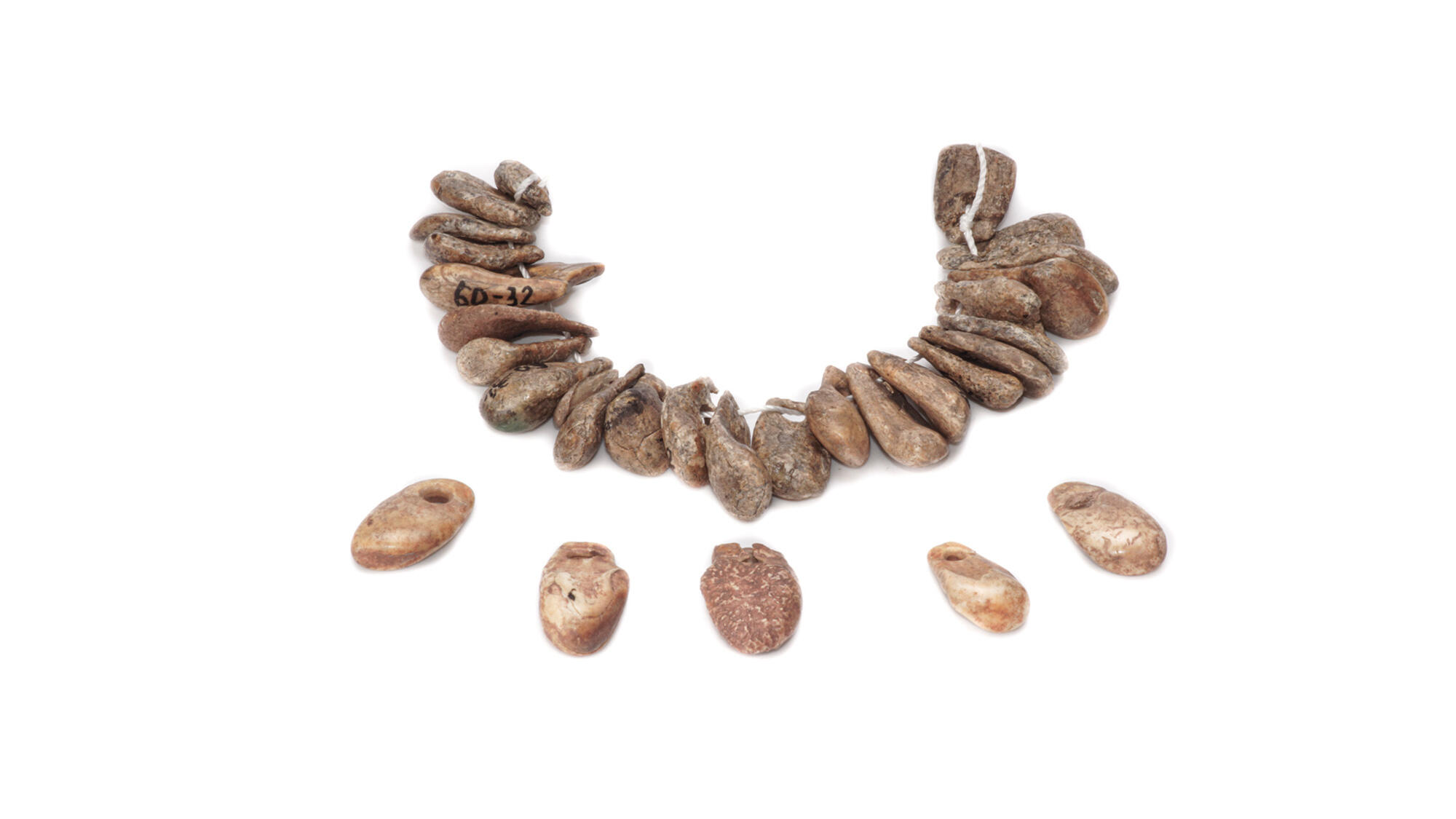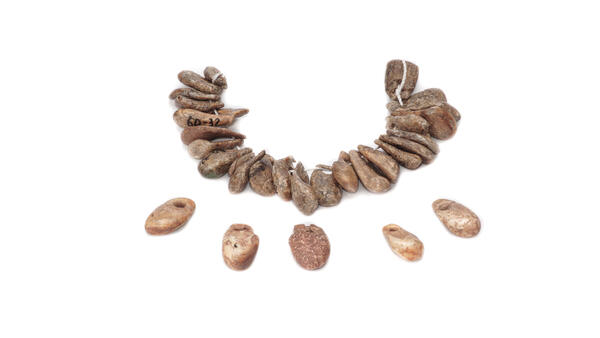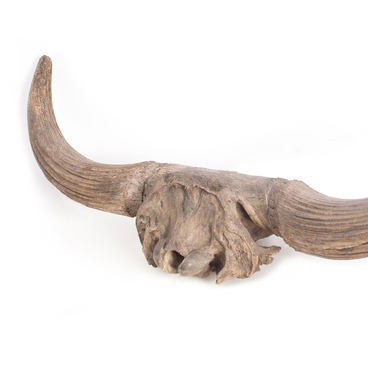The beads from the Regional Museum of the Local History collection were discovered by the Irkutsk archaeologist Alexey Okladnikov in the 1950s. At that time, he was working at the excavations of ancient burials near the Isakovo village in the Bratsky region of the Irkutsk region. The jewelry found was made from the tushes of a maral, a large deer.
The village of Isakovo gave the name to a separate culture, identified and studied by Okladnikov. He attributed it to the Neolithic era (the end of the 4th millennium BC). In his opinion, people of the Isakovo culture lived in the taiga, and therefore their main occupation was hunting. They also knew how to make ceramic dishes, tools and jewelry.
In the Isakovo culture single grave dominated: one deceased person was placed in different poses in the graves, for example, sitting or lying on his back. Archaeologists found inventory-items inside the burials that, as it was believed, could be needed by the deceased person in the afterlife. They were laid out and placed on red spots of ochre — most likely, the dye was part of a magical ritual.
There were ceramics, stone and bone tools placed in the graves: spearheads, daggers, knives, scrapers, points and needles. Dead persons before the burial were often provided with objects that probably played a decorative or sacred role: archaeologists found pendants made of the maral tushes and incisors in the graves of the Isakov culture. The headdress was decorated with boar tushes.
Alexey Okladnikov believed that the representatives of the Isakov culture were gradually replaced by the Serovites (citizens of Serovo town) — they made ceramics in a similar way, but slightly changed their tools. Contemporary researchers do not distinguish between the Isakovo and Serov cultures.
Okladnikov’s finds mark an important milestone in the development of archaeology, including research into primitive art in Siberia. Scientists suggest that the first examples of art appeared 30-40 thousand years ago. And some researchers even tend to believe that art appeared in the world in earlier forms as early as 300 thousand years ago.
Small sculptures — images of humans, animals or abstract images, beads, pendants and other items that were not intended for use in the household, were classified as primitive objects of art. Ancient mobile art samples were made of stone, bone, clay, and later-of metal.
The village of Isakovo gave the name to a separate culture, identified and studied by Okladnikov. He attributed it to the Neolithic era (the end of the 4th millennium BC). In his opinion, people of the Isakovo culture lived in the taiga, and therefore their main occupation was hunting. They also knew how to make ceramic dishes, tools and jewelry.
In the Isakovo culture single grave dominated: one deceased person was placed in different poses in the graves, for example, sitting or lying on his back. Archaeologists found inventory-items inside the burials that, as it was believed, could be needed by the deceased person in the afterlife. They were laid out and placed on red spots of ochre — most likely, the dye was part of a magical ritual.
There were ceramics, stone and bone tools placed in the graves: spearheads, daggers, knives, scrapers, points and needles. Dead persons before the burial were often provided with objects that probably played a decorative or sacred role: archaeologists found pendants made of the maral tushes and incisors in the graves of the Isakov culture. The headdress was decorated with boar tushes.
Alexey Okladnikov believed that the representatives of the Isakov culture were gradually replaced by the Serovites (citizens of Serovo town) — they made ceramics in a similar way, but slightly changed their tools. Contemporary researchers do not distinguish between the Isakovo and Serov cultures.
Okladnikov’s finds mark an important milestone in the development of archaeology, including research into primitive art in Siberia. Scientists suggest that the first examples of art appeared 30-40 thousand years ago. And some researchers even tend to believe that art appeared in the world in earlier forms as early as 300 thousand years ago.
Small sculptures — images of humans, animals or abstract images, beads, pendants and other items that were not intended for use in the household, were classified as primitive objects of art. Ancient mobile art samples were made of stone, bone, clay, and later-of metal.



